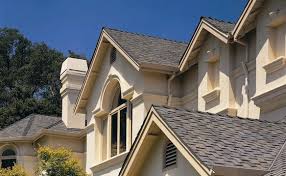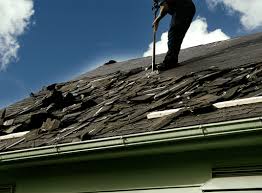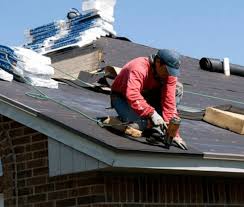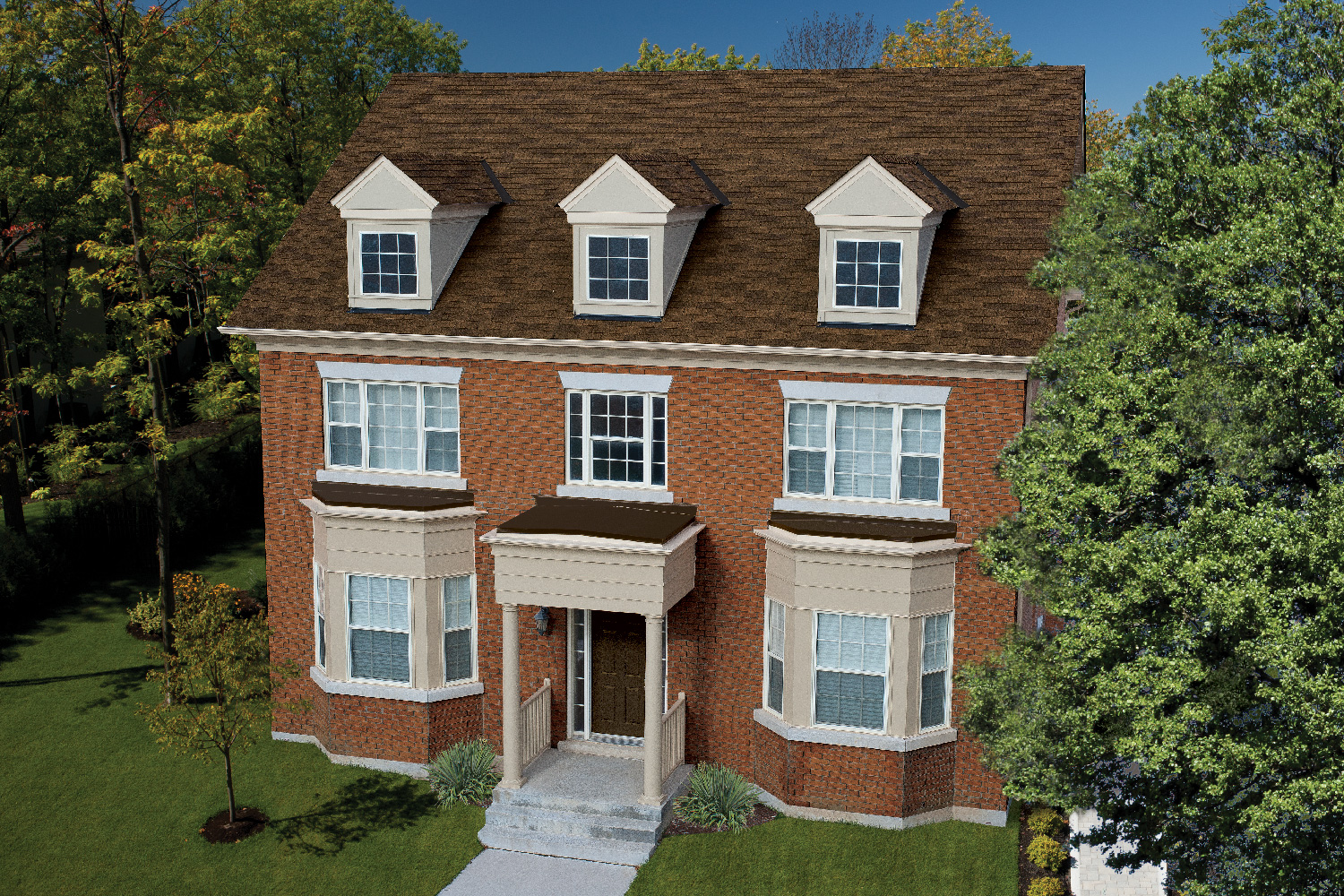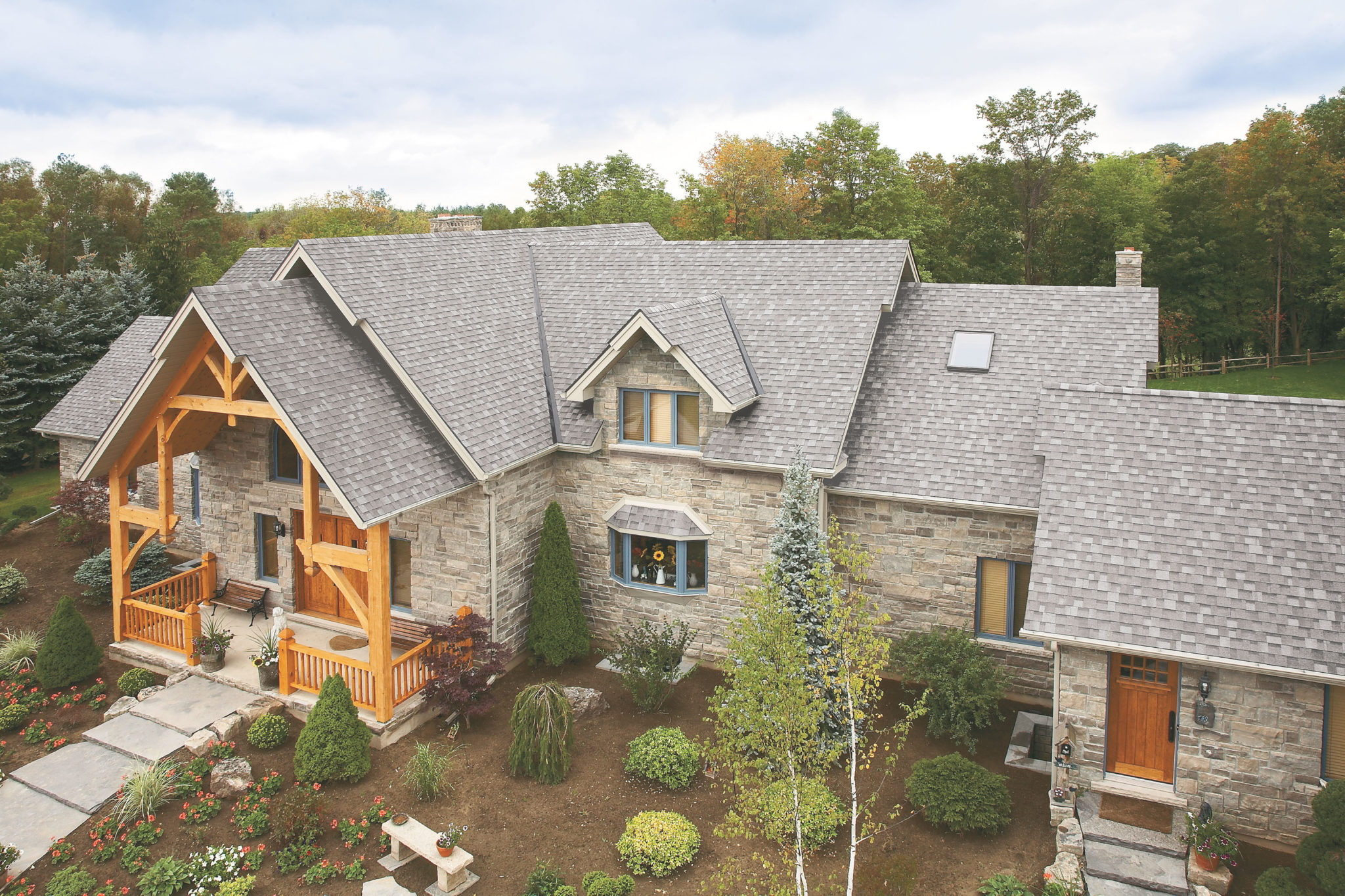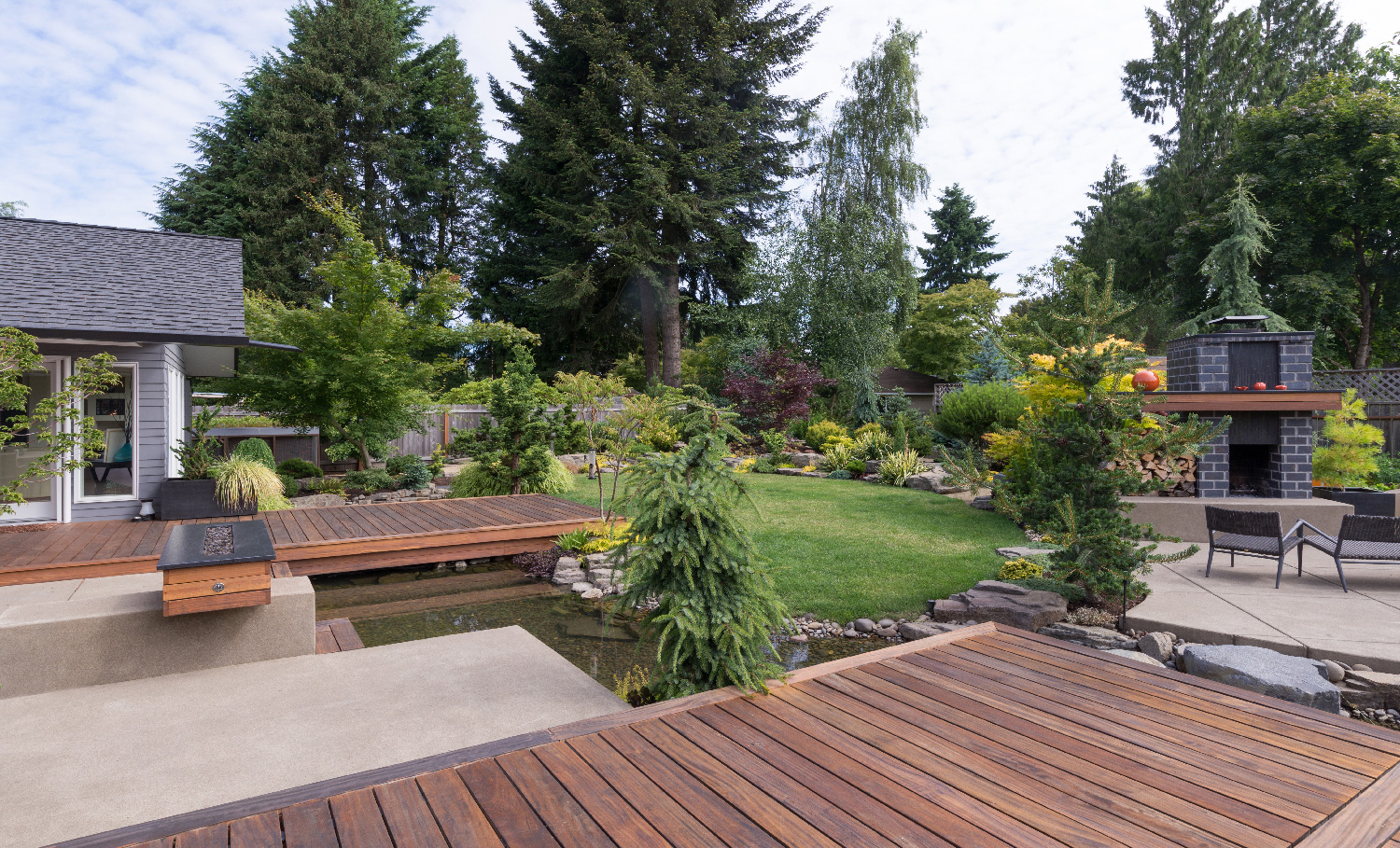WHAT ARE THE BENEFITS OF METAL ROOFING?
Longevity, energy efficiency and a lower environmental impact are just some of the benefits of choosing a metal roof.
Although the initial cost of a metal roof is more than traditional asphalt, so is its lifespan. Metal roofs can last 30 to 50 years longer than other roofing materials, saving you money in the long-term. ) Plus, cool-metal roofing uses a reflective solar coating designed to minimize heat buildup and reduce air conditioning costs. (Another money-saver!)
Every year, about 13.2 million tons of asphalt roofing shingle waste is generated across the United States; making metal an environmentally friendly option to consider. They are also 100% recyclable and are made with a minimum of 25% recycled material, depending on the type of metal.
WHAT ROOFING MATERIAL SHOULD I PICK?
Metal roofs can be manufactured from a variety of metals and alloys including steel, aluminum, copper, zinc and terne (zinc-tin alloy).
Steel:
There are three variations of steel: galvanized, galvalume, and weathering steel (corten). Steel is one of the most common metal roof materials.One reason for its popularity is the varying color options, high strength, low weight and long-term durability. These can allow for a variety of looks to complement your home.
Compared to other metal, steel is typically less expensive. Depending upon the thickness, color, and quality of the desired panels, pricing could range anywhere from $75 to $250 per roofing square (100 square feet).
Steel roofs do have a downside, though. If your home is located along the coast and exposed to salt spray, you may want to rule out galvanized steel – it could corrode in such conditions.
Aluminum:
Aluminum is typically more expensive than steel, but also comes with more resistance. Aluminum sheet metal is very lightweight and easy for a contractor to form and install. Even though aluminum is a thinner and lighter material, it’s still very durable and can replicate the strength of much thicker metals.
One of the biggest selling points of an aluminum roof is the fact that it doesn’t have red rust and corrosion is generally minimal as it ages. Studies have even shown that aluminum can work great in coastal areas with high rainfall and seawater spray conditions. However, aluminum is typically a thinner material and therefore more prone to denting.
Copper:
Copper is long-lasting, known to last up to 100 years. It is very soft, which makes it a quieter option, think heavy rain downpour! However, copper is expensive and over time acquires a greenish patina. Some people find that attractive, but others don’t like the transitioning hues.
Zinc:
Zinc actually possesses its own outer protective layer, which prevents against corrosion, scratching and panel markings. If wind or another element were to scratch the surface of the zinc roof, the metal’s protective layer would actually fix and correct itself over time. Zinc roofs have been known to last anywhere from 60 to 100 years.

How to Repair a Hole in a Metal Roof System
Clean the repair area:
The first step in the repair of any metal roofing material will involve cleaning the surface. A hole in a metal roof system can be caused by any number of sources—the hole may be from deterioration and rust, or it may be from something falling onto the roof surface, such as a large branch. No matter what the cause of the hole, the area around the hole is most likely dirty and will require cleaning.
Thoroughly clean the surface of the metal panel using Simple Green or another cleaner, until the surface of the roof panels is completely free of any dirt, film, and algae growth. Any cleaner residue will compromise the integrity of the roof repair.
After cleaning the surface of the metal panel, use a wire brush to scuff the surface where the repair will be made. Scuffing the surface will help the sealant bond to the metal. Use the wire brush only in the area to be patched; wire brushing beyond that may remove the protective coating from the metal panel surface, causing later deterioration.
Measure the repair area and cut a patch:
Cut the chosen sheet metal to a size that matches the area to be patched. The sheet metal patch should overlap onto the metal panel at least two inches past the edges of the damaged area. After the sheet metal patch has been cut and fit to size, round the corners of the patch with a file or emery cloth to prevent any sharp corners from becoming a catching spot for snow or ice.
Once the patch has been measured, place it over the hole being repaired. Take a pencil and outline the patch onto the roofing. Remove the patch and examine the outline to make sure the patch will overlap by at least 2 inches in all directions past the edges of the damaged area.
Install the repair patch:
Apply the color-matched urethane sealant to the surface of the metal panel being repaired, staying just inside the marked pencil line. Apply the sealant liberally in the area, so that there are no gaps or voids at the leading edge of the patch.
Press the patch into place over the damaged area. The sealant should squeeze out from the leading edge of the patch along all sides. If there are areas where the sealant is not oozing, these are areas where moisture may later penetrate under the patch, causing a deterioration of the patch. Apply a little more sealant here to eliminate any gaps.
Variation: holes in raised roofing seams:
If the hole or damage to the roof is in the raised seam between panels rather than in the flat area of a panel, patch it with an asphalt impregnated glass-membrane fabric over the damaged portion of the seam itself. On raised-seam roofs, it is important that the individual panels be allowed to move along the seams, so never attach a metal patch that is anchored to both roofing panels over the seam. Instead, repair the damage to the seam with narrow strips of membrane fabric confined to the raised seam section. The patching strip should overlap the damaged area by at least 2 inches. Over the top of the patching strip, apply a coating of urethane sealant, then another patching strip. Done correctly, both roofing panels will still be able to move independently.
Secure the patch:
Once the patch has been pressed in place, attach it to the surface of the metal roof panel, using pan-head sheet metal screws. Space the screws every three to four inches around the perimeter of the patch. The screws should be applied within one inch of the edges of the patch so that they apply uniform pressure to the edges and to the sealant beneath the patch. The screws should be only long enough to secure the patch to the underlying roofing panel. Never screw the patch down through the roofing panels and into the roof decking or rafters.
As necessary after the patch has been attached, retool any sealant that is bleeding from the edge of the patch, using a putty knife. This will ensure that the sealant properly seals the edges of the patch and prevents moisture from penetrating.
Paint the patch to match the roof:
If desired, the surface of the patch can be painted to match the color of the metal roof panels. To do this, lightly wire-brush the surface of the metal patch and the metal panel just past the edges of the patch. Paint over the surface of the patch and onto the surface of the underlying panel. It may be necessary to wait for the sealant to cure before it will accept paint. Also, confirm that the paint is compatible with the sealant you used.
Safety Considerations
Safety is a major concern when completing any roof repair project. A hole in a roof system may indicate that there are other concerns about the overall structure, including decking deterioration. Be sure to conduct a proper under-deck safety review and roof analysis before attempting to complete this or any roof repair. If there are concerns about completing your roof repair safely, contact a professional roofing contractor who can complete the repair for you in a safe and professional manner.
Metal Roofing Drawbacks
Though metal roofing offers many pluses, a few drawbacks are worthy of mention. For the most part, metal roofing manufacturers have improved their products to address or solve many of these concerns:
Metal Roof Cost.
The biggest drawback is initial cost. Metal roofing is equivalent in cost to other premium materials—from about $150 to $600 per square (100 square feet).
Because of the material’s long-term durability, the trick is that you ultimately save the difference (and more) if you stay in the house for a long time and, of course, you save on seasonal maintenance. Then again, if you plan to move in a couple of years, you probably won’t get the return on your investment.
Noise.
For some, the sound of rain tapping on the roof is romantic and homey. For others, it’s like living inside a drum. In a rainstorm or hailstorm, living beneath thin sheets of metal is bound to be noisier than living beneath thick slate or tile. Noise can be controlled both by using materials that have structural barriers to minimize the drumming effect and by applying them over sound-deadening insulation and solid plywood sheathing.
Denting.
Just as your car will dent if a golf ball hits it, a metal roof can dent if large hailstones fall on it. Copper and aluminum roofing, much softer than steel, are more prone to denting. Some types are guaranteed not to dent, however.
Though you shouldn’t have to walk on a roof that doesn’t leak, there may be occasions when a plumber needs to snake out a vent pipe or a chimney sweep needs access to the flue. You can walk on some metal roofs but not all of them. This depends on how the particular product is made and the type of construction supporting it. As you might imagine, metal can be very slippery when wet.
Marring & care.
Some painted metal roof finishes can peel, chip, fade, scratch, or chalk, although nearly all are guaranteed for 30 years. Walking on some types, particularly those with a granulated-stone surface, may cause wear.
Installers must be careful not to scratch or dent the roofing during installation, and panels must be treated with care. Unlike conventional roofing, some metal shingle systems are installed from the top down, eliminating the need to walk on them. Once installed, you may need to hose off roofing now and then to keep it looking good.
Leaking.
A metal roof must be installed correctly. Roofs with exposed fasteners are particularly vulnerable to improper installation. If screws attach through the flat surfaces (rather than the raised ridges), rain water can run down the roof and seep into the screw holes. For this reason, special resilient washes must seal around screw heads. If you install this type of roof, be sure manufacturer’s instructions are followed precisely.
Expansion & contraction.
Because metal expands and contracts as it warms and cools, most new products have fastening systems that accommodate movement. Otherwise, fasteners that secure the roofing may tend to come loose. Expansion and contraction on hot days can cause a wavy affect.
Modifications.
Metal roofing materials installed in large panels are more difficult to replace if damaged than individual shingles. Also, if you remodel or add on to your home 10 or 20 years from now, it may be difficult to match the material.
Lightning.
Many people assume that because metal conducts electricity, it also attracts it. This really isn’t the case, and many instances have been documented where lightning has struck trees or other high objects located near metal roofs rather than the roofs themselves. Just the same, metal roofs can be easily grounded by a lightning protection company.
House fire.
Though metal roofs are good at guarding against a fire that approaches from outside a house (such as from flying sparks and embers), they are not ideal for fires that start inside a house. With a serious house fire, firemen may need to cut through the roof to put out the fire—this job can be much more difficult and take longer if the house is capped with a metal roof.
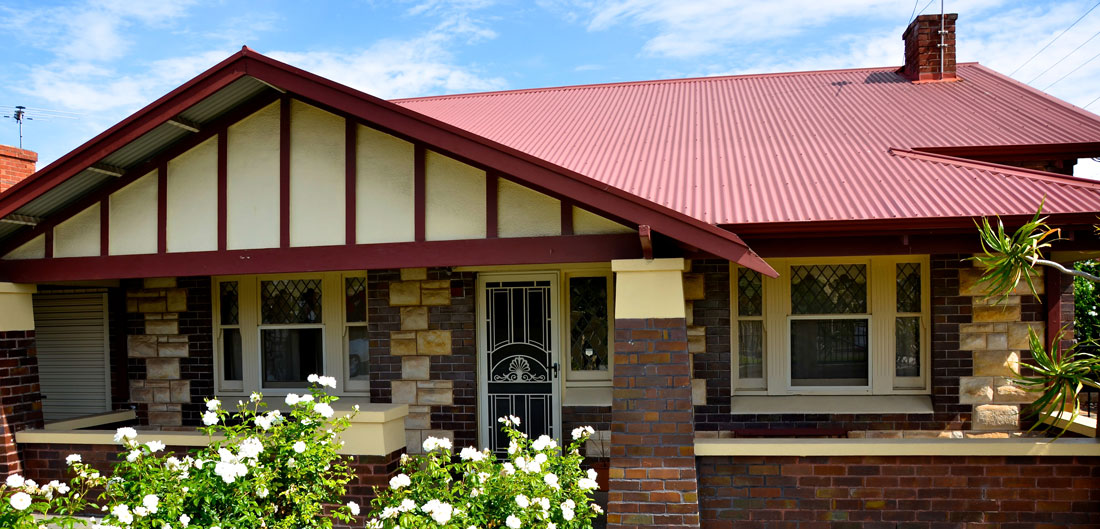
What’s involved in how to install metal roofing
A steel roof is a lifetime investment, lasting 50 years or more if it’s a good one. Asphalt roofs typically last 20 to 30 years, depending on the installation and shingle quality. So, the investment might be worth it, but the range of choices makes shopping for a steel roofing system more complicated than you might think.
If you want to install steel over asphalt, your best choice for installing metal roofing is to use a steel shingle system like the one shown instead of the more common (and more expensive) standing seam steel. In a standing seam roof, long, single panels run vertically all the way from the eave to the ridge. In contrast, steel shingles are small panels installed in horizontal rows much like other shingles.
Better steel shingle systems, like the one shown, install over a framework of 2x2s. This framework has three big advantages. First, because the frame is screwed directly to the rafters and the interlocked shingles are screwed to the frame, the roof can withstand winds of up to 120 mph without damage. Second, the frame creates a flat and straight surface even when the shingles are badly curled or the roof ridge is bowed.
Finally, the frame creates a ventilation gap that helps prevent ice dams in the winter and cools the roof and the house in the summer. To vent the roof, holes are cut in the old roof (Detail 1) above the soffit, which pulls air through the soffit vents underneath. Cool outside air then travels under the shingles to the vented ridge (Detail 2), pulling out moisture and heat.
What causes condensation on metal panels?
When temperature and humidity conditions reach dew point, moisture can condense on the underside of metal roofing and potentially cause water damage to the inside of your customer’s building. Those drips from ceilings and surface moisture occur when warm air comes in contact with the cooler roofline or walls.
High interior humidity—a common cause of condensation in metal buildings—can result from heating and air conditioning systems, how the building is used, gas-fired heating components, improper construction techniques or even human respiration, as these all give off moisture vapor.
Effects of condensation on different types of panels:
If there is an abundance of condensation, water droplets will form and can cause damage. In metal buildings, there are a few possible consequences of trapped moisture in wall and roof systems:
- Corrosion of metal components, even on surface-treated metal: When exposed to moisture, metal components can oxidize and weaken, decreasing the life of your customer’s building.
- Degradation/ reduced effectiveness of the thermal performance of insulation
- Mold or mildew growth, which can cause unpleasant odors and increase health risks, particularly for those with allergies or asthma
- Insect infestations
Note: The probability of significant problems will depend on the location and usage of your customer’s building.
